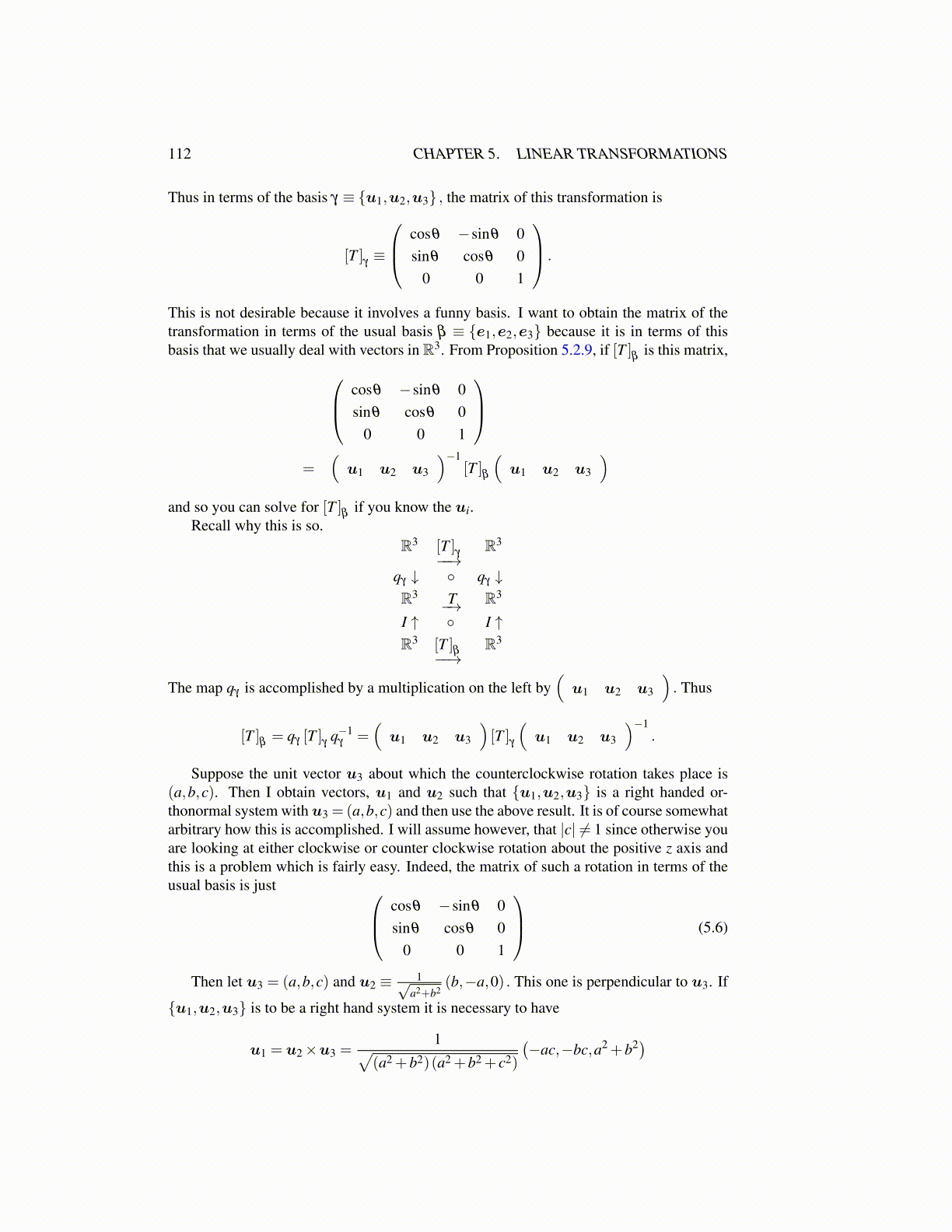
112 CHAPTER 5. LINEAR TRANSFORMATIONS
Thus in terms of the basis γ ≡ {u1,u2,u3} , the matrix of this transformation is
[T ]γ≡
cosθ −sinθ 0sinθ cosθ 0
0 0 1
.
This is not desirable because it involves a funny basis. I want to obtain the matrix of thetransformation in terms of the usual basis β ≡ {e1,e2,e3} because it is in terms of thisbasis that we usually deal with vectors in R3. From Proposition 5.2.9, if [T ]
βis this matrix, cosθ −sinθ 0
sinθ cosθ 00 0 1
=
(u1 u2 u3
)−1[T ]
β
(u1 u2 u3
)and so you can solve for [T ]
βif you know the ui.
Recall why this is so.R3 [T ]
γ−−→R3
qγ ↓ ◦ qγ ↓R3 T−→ R3
I ↑ ◦ I ↑R3 [T ]
β−−→R3
The map qγ is accomplished by a multiplication on the left by(
u1 u2 u3
). Thus
[T ]β= qγ [T ]γ q−1
γ =(
u1 u2 u3
)[T ]
γ
(u1 u2 u3
)−1.
Suppose the unit vector u3 about which the counterclockwise rotation takes place is(a,b,c). Then I obtain vectors, u1 and u2 such that {u1,u2,u3} is a right handed or-thonormal system with u3 = (a,b,c) and then use the above result. It is of course somewhatarbitrary how this is accomplished. I will assume however, that |c| ̸= 1 since otherwise youare looking at either clockwise or counter clockwise rotation about the positive z axis andthis is a problem which is fairly easy. Indeed, the matrix of such a rotation in terms of theusual basis is just cosθ −sinθ 0
sinθ cosθ 00 0 1
(5.6)
Then let u3 = (a,b,c) and u2 ≡ 1√a2+b2
(b,−a,0) . This one is perpendicular to u3. If
{u1,u2,u3} is to be a right hand system it is necessary to have
u1 = u2×u3 =1√
(a2 +b2)(a2 +b2 + c2)
(−ac,−bc,a2 +b2)